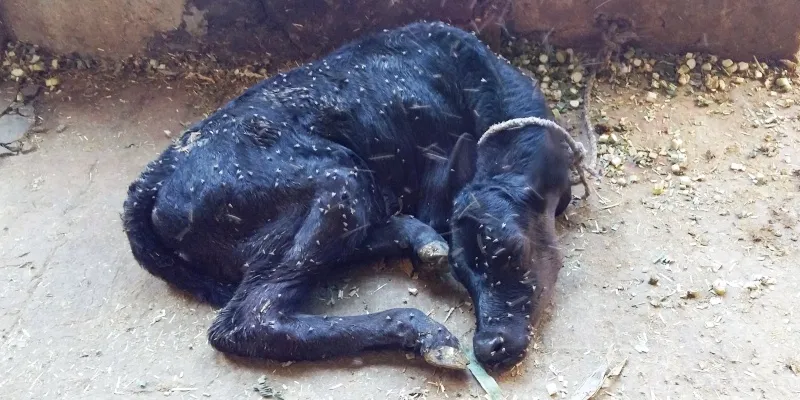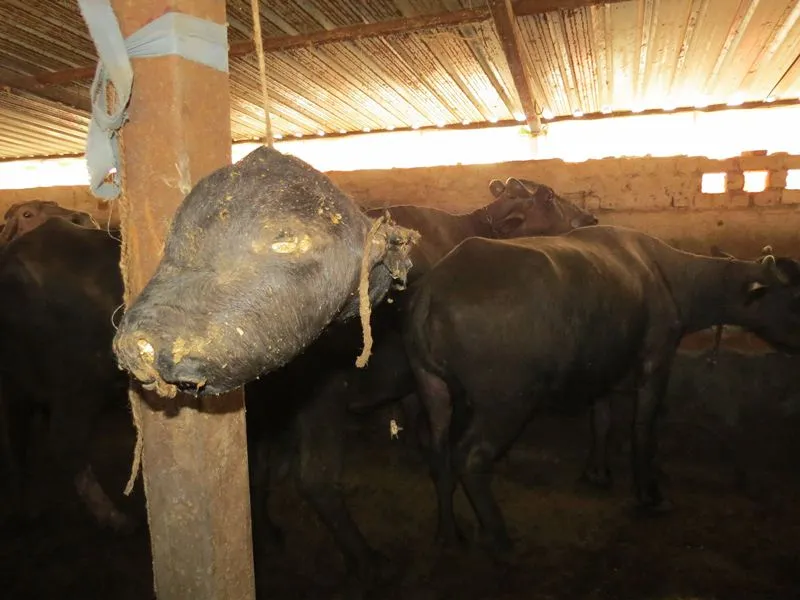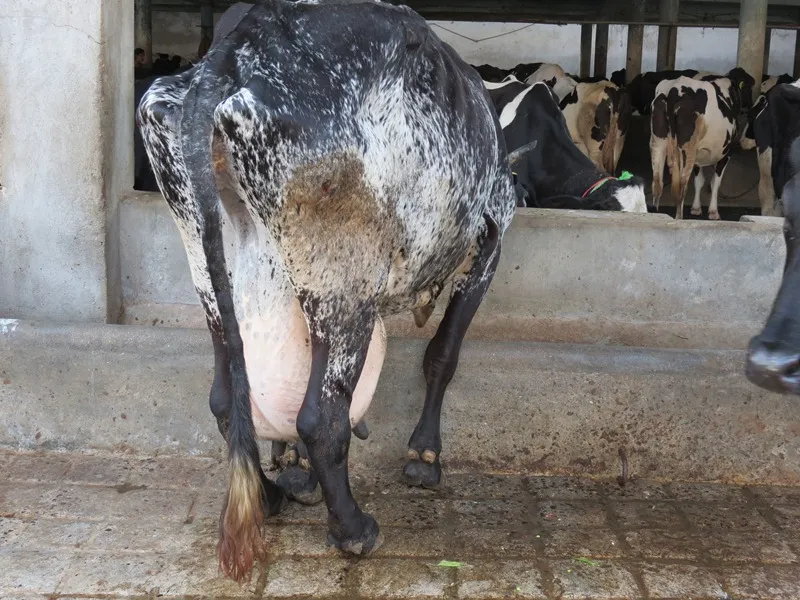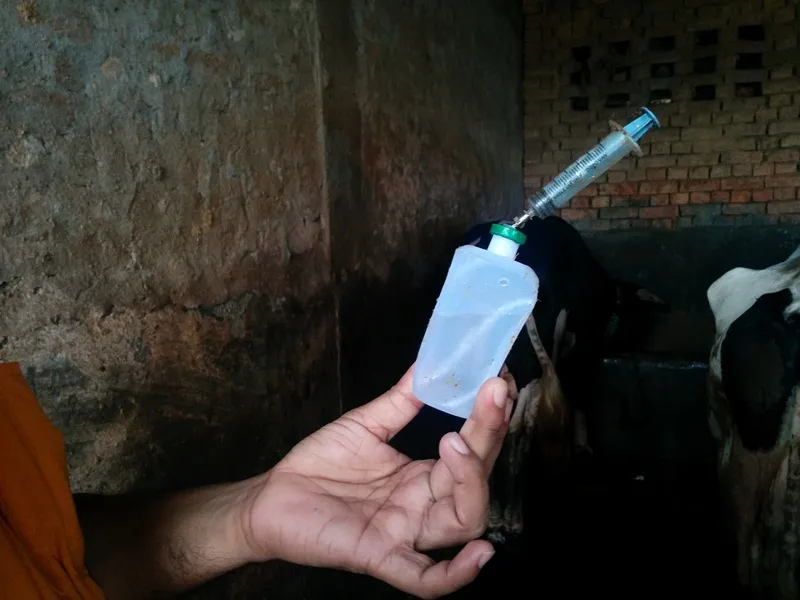Abandoned, engineered, slaughtered: dairy industry decides the fate of India’s bulls
While the cruel practices of the dairy industry, and implications of the beef ban have been discussed widely, the problem of cattle abandonment is rarely spoken about.

Nearly 60 lakh stray cattle roamed the streets of India in 2012, as per the latest livestock census. For a country with a cattle population of around 19 crore, this is a large number.
Studying the condition of 24,456 cattle, the Federation of Indian Animal Protection Organisations (FIAPO), in October 2017, investigated dairies across the top ten milk producing states of Punjab, Telangana, Maharashtra, Madhya Pradesh, Uttar Pradesh, Gujarat, Rajasthan, Haryana, Tamil Nadu, and New Delhi.
The findings revealed not just the cruel treatment meted to the animals, but also the reason behind large numbers of stray cattle roaming the streets. The study showed the bulls were at the receiving end of most cruelty as they did not produce milk and often, are abandoned as calves.

The inconvenient truth
Bull calves are not seen as ‘useful’ in the dairy industry and farmers often neglect them resulting in death, or sell the animals to the food, cosmetic, or leather industry.
Investigation across 451 dairies revealed that in 25.1 percent of them, male calves die in the first month of being born. Around 62.9 percent dairies sell cattle to smaller farmers or slaughter houses but with the recent legislation on cattle protection, culling has become difficult and many animals thus end up abandoned.
Also, more cows are now seen on the streets and rarely buffaloes, as the law prohibits the culling of cows for meat. Explaining the trend across dairy farms, Jairoop Sandhu Riar, the investigator for the FAIPO says:
For the dairy industry, the animal is not really an animal; it is a machine really. Their entire process is about getting the maximum amount of milk with the least amount of input. And the dairy farms, the gaushalas, are already overcrowded. Land is scarce and we do not have space for cattle.

There was a period when bullocks were revered in India and considered an indispensable component of the nation’s agrarian society. However, higher mechanisation with the Green Revolution led to many farmers replacing farm animals with machines.
Prem Singh, an organic farmer from Barokhar Khurd village near Banda town in Madhya Pradesh’s Bundelkhand region says,
We have rural banks, loans and credit system through which farmers can buy tractor and other machines for farming. Like everyone in my village, I too depended on this system until 1990s. I realised that traditional tilling and agriculture methods are indispensable. Hence, I switched to negligible use of fertilisers and brought bulls back to the field.
It has been over 25 years since Prem Singh started tilling his fields with bulls, and last year became debt free. He explains that while tractors and power tillers are attractive options for farming, they are expensive. The economic cost of farming goes beyond the machine, as maintenance, and fuel price continues to form a major expenditure.

Irrelevant animals
As new technologies become accessible, bulls are being considered irrelevant even for reproduction as dairy owners and farmers prefer artificial insemination.
Jairoop says that in most villages, only one or two farmers have a grown bull.
And the same bull will be ‘used’, almost like a semen producer, for the rest of the cows or buffaloes in the hamlet. That is, if they are relying on the natural process of impregnation of cows.
While the law mandates dairy farm owners and farmers contact the state animal husbandry department or a certified veterinarian to undertake the activity, this practice is rarely followed. The dairy industry too rears bulls only for reproduction and large dairy farms with up to 300 cows have only two to three bulls.
These bulls are basically raised for this one purpose alone. At any given point, 10-15 impregnation are being done through a single bull, Jairoop says.

In 2017, the National Dairy Plan aimed to use artificial insemination for at least 35 percent of all fertile animals. In fact, semen production has become a norm over the past 15 years, with the number of inseminations up from 20 million to 69.29 million.
“While this method is efficient, it has been found that repeated breeding by means of artificial insemination causes serious reproductive problems in close to 40 percent of the cattle,” Jairoop adds.
Taking stock of this situation, the Uttarakhand State Animal Welfare Board issued directives to dairy farms to improve the conditions of dairy animals. The Cow Progeny Act, although formulated in 2007, recently gained prominence with the state government enforcing the law with stricter vigilance.
Ashutosh Joshi, the Officer in Charge of the Uttarakhand State Animal Welfare Board, says,
We do not differentiate between the sex of the cattle. Calf, bull, or cow - all of them come under the protection of this act. If an animal gets sick, he/she will get treatment from the government veterinary hospital; if he dies, he will get post-mortem certificate from the concerned hospital. What we are saying is that we have to safeguard the life of the cattle.
Selective breeding
While the rules and laws are in place, discrimination against bullocks continues and, in fact, doesn’t end here. A new technology that allows for selection of the desired gender of a calf is gaining popularity. With this, the chances of a female calf being born increase by almost 80-90 percent.
Through this method, four out of five times the offspring will be female. Though this is currently available for only select breeds in India, the government is now pushing for this because they realise that the males have no value, says M.L. Kamboj, senior scientist at National Dairy Research Institute (NDRI).
A K Chandrashekhar, deputy director, animal husbandry department of Belagavi, Karnataka in a Times of India report was quoted as saying, "The government is planning to implement sexed semen technique in some districts including Belagavi on a pilot basis. Once it is proved successful, it will be implemented on a long-term basis and extended to all districts.”
Daljeet Singh, president of the Progressive Dairy Farmers’ Association (PDFA) of Punjab, says that despite the high price of this technology, farmers are willing to bear the cost. Semen from a bull with higher genetic merit leads to better milk yields, increases the number of productive lactations, and fat and protein content.
Daljeet annually imports 15,000-20,000 frozen sexed semen doses on behalf of PDFA members from genetics firms such as World Wide Sires, Genex and ABS Global of US, and Semex of Canada.
Selective breeding is already showing its results. In 2015-16, about 670 lakh artificial inseminations were carried out in India, covering an estimated 30 percent of the breed-able cows and buffaloes.
The economic undesirability of male cattle is evident in the gender imbalance — 64.42 percent female and 35.57 percent male in cattle, and 85.18 percent female and 14.8 per cent male in buffalo, says Rajesh Kasturirangan, a mathematician, cognitive scientist and researcher at the Massachusetts Institute of Technology (MIT), Boston.
While Dr Kamboj believes that extinction of this breed is unlikely for at least for the next three decades, the trend of inhumane management of “unwanted” animals is worrying.







